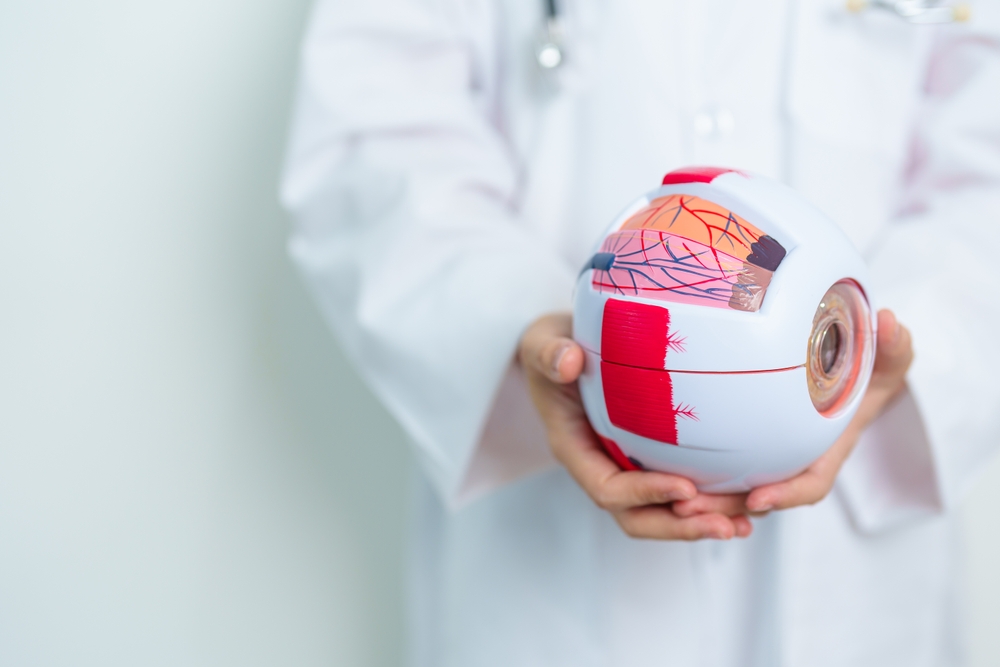
Diabetic retinopathy is a complication of diabetes that affects the eyes, caused by damage to the blood vessels in the light-sensitive tissue at the back of the eye (retina). It’s crucial to understand the symptoms, the importance of early detection, and the treatment options available for managing and living with diabetic retinopathy.
What is diabetic retinopathy?
Essentially, it is the result of high blood sugar levels causing damage to the blood vessels in the retina. These blood vessels can swell and leak, or they can even close, blocking blood flow to certain areas of the retina. In some cases, abnormal new blood vessels grow on the surface of the retina, further compromising vision.
Symptoms of Diabetic Retinopathy
In the early stages, you may notice no changes at all, or you may experience spots or dark strings floating in your vision, blurred vision, fluctuating vision, impaired color vision, dark or empty areas in your vision, or vision loss. It's important to note that these symptoms can occur in one or both eyes.
Often, the disease will progress unnoticed until it affects vision significantly. Thus, regular eye examinations are crucial for early detection, even when no symptoms are present.
The Importance of Early Detection
As with any health concern, early detection is crucial when it comes to diabetic retinopathy. Regular eye exams can help detect the disease in its early stages, before it leads to vision loss. This is especially important if you're diabetic, as you're at a higher risk of developing this condition.
During an eye exam, your optometrist will dilate your pupils and examine your eyes to look for any signs of retinopathy and other eye problems. They may also conduct a fluorescein angiography to check the blood flow in the retina and optic nerve, or an optical coherence tomography (OCT) to check for retinal thickening or swelling.
By catching the condition early, it's possible to start treatment sooner, which can slow or even stop the progression of the disease.
Common Treatment Options for Diabetic Retinopathy
The treatment of diabetic retinopathy is tailored to the individual patient, depending on the specifics of their condition. In some cases, especially in the early stages, good blood sugar control may slow the progression of the disease.
However, as the disease progresses, more specific treatments may be needed. These can include laser treatment, a surgical procedure called vitrectomy, and injectable medications.
It's also important to note that while these treatments can slow the progression of the disease and reduce the risk of blindness, they won't cure diabetic retinopathy. Regular follow-up treatments and ongoing care are necessary to manage the condition effectively.
Laser Treatment
Laser treatment is a common option for treating diabetic retinopathy. Specifically, it's often used to manage proliferative diabetic retinopathy, the more advanced form of the disease.
The procedure involves using a laser to make tiny burns on the retina, which helps to shrink abnormal blood vessels and prevent them from growing and leaking. There are two types of laser treatments: focal laser treatment, which slows the leakage of blood and fluid in the eye, and scatter laser treatment, which shrinks abnormal blood vessels.
While laser treatment can greatly reduce the risk of vision loss if used early, it does come with side effects, including loss of night vision and reduced peripheral vision.
Vitrectomy
For cases of advanced diabetic retinopathy, especially when there's significant bleeding in the eye, a surgical procedure called a vitrectomy may be necessary.
During a vitrectomy, the surgeon removes the vitreous, the clear gel that fills the center of the eye. This is done to remove blood from the vitreous cavity and to prevent further retinal damage by removing scar tissue or repairing retinal detachments.
Vitrectomy can be very successful in restoring vision and preventing further vision loss, but it's important to remember that it's a major surgery with potential complications and a significant recovery period.
Injectable Medications
Another treatment option for diabetic retinopathy is the use of injectable medications, specifically anti-VEGF and corticosteroids. These medications are injected directly into the eye to decrease fluid leakage, reduce inflammation, and inhibit the growth of abnormal blood vessels.
Anti-VEGF drugs, like Avastin, Lucentis, and Eylea, work by blocking a specific protein that stimulates abnormal blood vessel growth. Corticosteroids, on the other hand, reduce inflammation and inhibit the growth of abnormal blood vessels, but they can increase the risk of cataracts and glaucoma.
Ongoing Care and Regular Check-ups
Regardless of the treatment option chosen, ongoing care and regular check-ups are crucial parts of managing diabetic retinopathy. This includes maintaining good blood sugar control, monitoring blood pressure and cholesterol levels, and having regular eye exams.
Additionally, it's important to maintain a healthy lifestyle: eat a balanced diet, get regular exercise, avoid smoking, and limit alcohol consumption. These simple steps, along with regular medical care, can make a significant difference in managing diabetic retinopathy and maintaining your quality of life.
Living with Diabetic Retinopathy
Living with diabetic retinopathy is undoubtedly challenging, but it's not a life sentence of darkness. With early detection, regular check-ups, and appropriate treatment, most people with diabetic retinopathy can maintain good vision.
To learn more about treatment options for diabetic retinopathy, visit Clarksdale Vision Center in our Clarksdale, Mississippi, office. Call (662) 627-2020 to schedule an appointment today.




